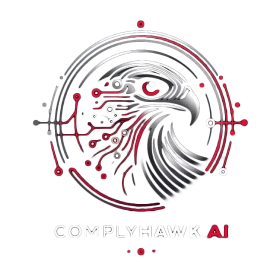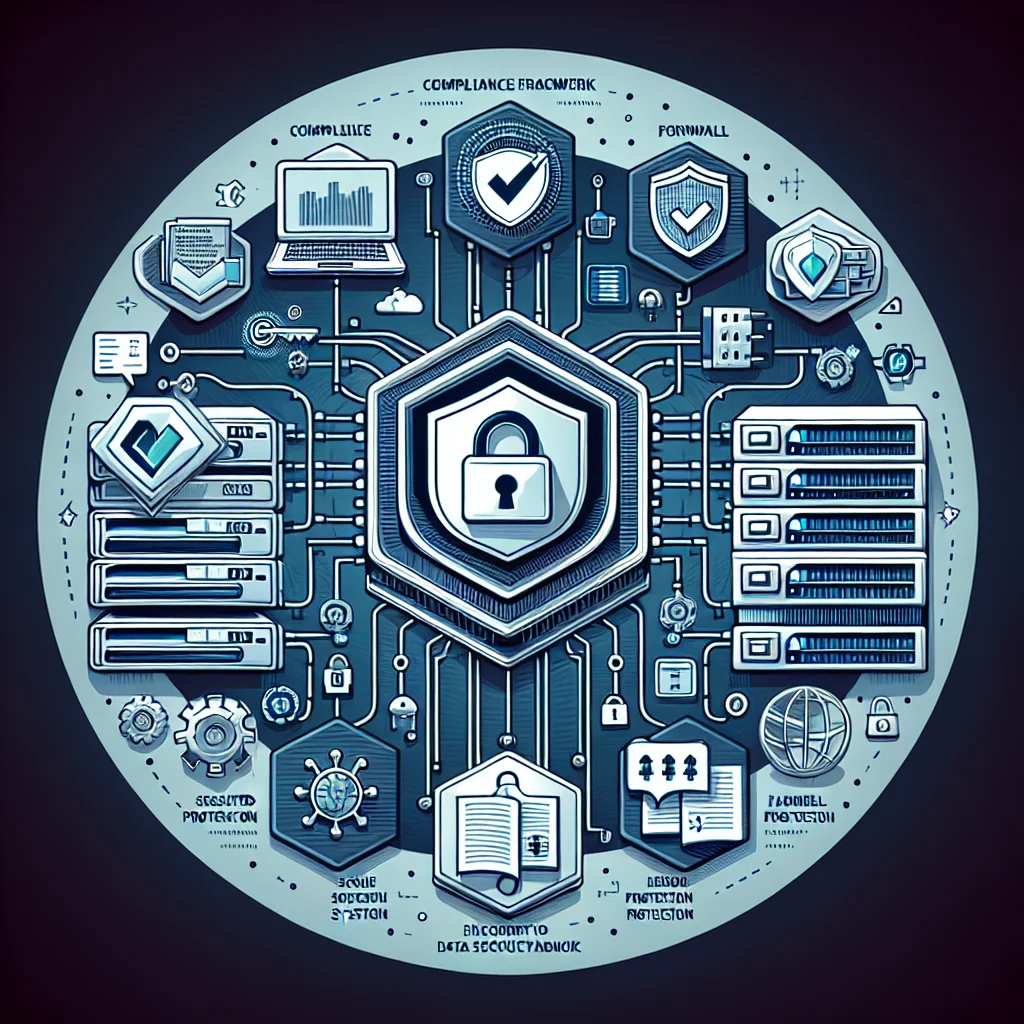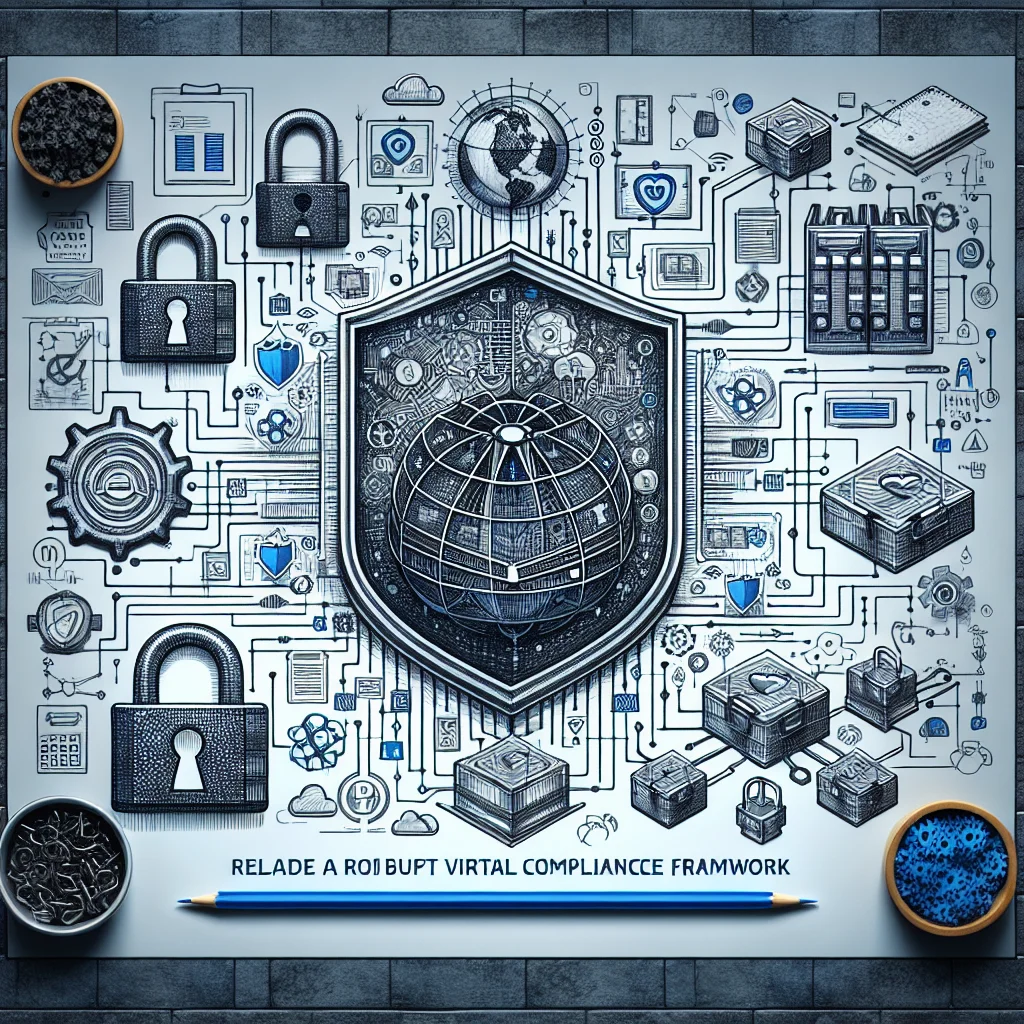Introduction
In the rapidly evolving landscape of cybersecurity, compliance is not just a box to tick but a critical facet of protecting your organization. Understanding the intricacies of various compliance frameworks can be daunting, especially for Chief Information Security Officers (CISOs) and IT professionals. One framework gaining traction globally and in the Middle East is the Secure Control Framework (SCF), which aims to simplify and streamline the compliance process.
What is the SCF Compliance Framework?
The Secure Control Framework (SCF) is a comprehensive set of cybersecurity and privacy controls designed to help organizations meet multiple regulatory requirements. SCF integrates best practices from various standards such as ISO 27001, NIST, and PCI DSS, offering a unified approach to compliance. This framework is particularly beneficial for organizations operating in highly regulated sectors where multiple compliance mandates overlap.
The SCF Compliance Framework, or Secure Controls Framework (SCF), is an open-source framework.
It developed by experts in the fields of cybersecurity and privacy, led by Tom Cornelius and Liz McQuarrie, to address the growing complexity of managing multiple compliance requirements in a unified manner.
Who is SCF For?
SCF is tailored for organizations of all sizes, from startups to large enterprises, across various industries. It’s especially relevant for:
- Financial Institutions who need to adhere to stringent data protection regulations.
- Healthcare Providers managing vast amounts of sensitive patient data.
- Technology Companies that handle significant volumes of customer information.
- Government Agencies responsible for securing public sector data.
Why is SCF Important for CISOs?
For CISOs, SCF provides a structured approach to managing cybersecurity risks and ensuring compliance. It offers several advantages:
- Unified Approach: SCF consolidates multiple frameworks, reducing the complexity associated with adhering to different standards.
- Risk Mitigation: By implementing SCF, CISOs can better identify and mitigate cybersecurity risks.
- Efficiency: SCF’s streamlined processes save time and resources, allowing CISOs to focus on strategic initiatives.
- Compliance Readiness: SCF helps organizations stay ahead of regulatory changes, ensuring ongoing compliance.
Middle East Specific Considerations
The Middle East, with its unique regulatory landscape and rapidly growing digital economy, presents specific challenges and opportunities for cybersecurity compliance. Here are some key considerations for implementing SCF in the Middle East:
Regional Regulations
- NESA (National Electronic Security Authority): In the UAE, NESA sets the standards for information security. SCF can help organizations align with NESA’s stringent requirements.
- Saudi Arabian Monetary Authority (SAMA): Financial institutions in Saudi Arabia must comply with SAMA’s cybersecurity framework, which shares similarities with SCF.
- Qatar’s National Information Assurance Policy: This policy outlines the cybersecurity requirements for organizations in Qatar, and SCF can aid in meeting these standards.
Cultural and Operational Context
- Language and Localization: Ensure that all compliance documentation and training materials are available in both English and Arabic to cater to the diverse workforce in the region.
- Vendor Management: Middle Eastern organizations often work with a mix of local and international vendors. SCF’s vendor risk management controls can help ensure that all third-party relationships are secure and compliant.
Technological Landscape
- Cloud Adoption: The Middle East is witnessing rapid cloud adoption. SCF includes controls specifically designed for cloud security, helping organizations protect data in the cloud.
- IoT Integration: With the rise of smart cities and IoT projects, SCF’s IoT security controls are crucial for safeguarding interconnected devices and systems.
Implementing the SCF Compliance Framework
Implementing the SCF Compliance Framework requires a structured approach that encompasses several key steps. Organizations seeking to adopt SCF should start with a thorough assessment of their current cybersecurity posture and compliance status. This involves identifying existing controls in place, recognizing gaps, and understanding regulatory obligations.
Step 1: Conduct a Gap Analysis
Conducting a gap analysis is a vital first step. Organizations must evaluate their current controls against the SCF requirements to determine where improvements are necessary. This analysis not only highlights deficiencies but also assists in prioritizing efforts based on risk exposure and compliance requirements.
Step 2: Develop an Implementation Roadmap
Once gaps are identified, develop a detailed implementation roadmap. This roadmap should outline specific actions, timelines, and responsible parties for each control that needs to be addressed. It’s essential to align these initiatives with business objectives to ensure executive buy-in and resource allocation.
Step 3: Training and Awareness
Training staff on SCF and its importance is crucial for successful implementation. Creating awareness about cybersecurity best practices fosters a culture of compliance and responsibility across the organization. Tailored training sessions, workshops, and easy-to-access reference materials will be beneficial in ensuring everyone understands their role in maintaining compliance.
Step 4: Monitor and Review
Post-implementation, continuous monitoring and review are imperative. Organizations should establish metrics and key performance indicators (KPIs) to track compliance effectiveness and identify areas for improvement. Regular internal audits will help ensure that controls remain effective and evolve as necessary in response to changing regulations and threats.
Commonly Asked Questions by CISOs
What are the Core Components of SCF?
SCF comprises various domains, each addressing specific aspects of cybersecurity and privacy:
- Governance: Policies, procedures, and oversight mechanisms.
- Risk Management: Identification, assessment, and mitigation of cybersecurity risks.
- Access Control: Managing user access and permissions.
- Incident Response: Preparedness and response strategies for cybersecurity incidents.
- Data Protection: Safeguarding sensitive data against unauthorized access or breaches.
How Does SCF Integrate with Other Frameworks?
One of SCF’s key strengths is its ability to harmonize with other major frameworks:
- ISO 27001: SCF incorporates ISO 27001 controls, making it easier for organizations to achieve certification.
- NIST: SCF aligns with NIST’s cybersecurity framework, providing a robust set of controls for risk management and incident response.
- PCI DSS: For organizations handling payment card data, SCF includes PCI DSS requirements, ensuring comprehensive coverage for financial transactions.
What are the Common Controls Across Frameworks?
Several controls are common across various frameworks, simplifying the compliance process:
- Access Control (ISO 27001, NIST, PCI DSS): Ensuring that only authorized users have access to sensitive information.
- Incident Response (ISO 27001, NIST): Developing and implementing effective incident response plans.
- Data Encryption (PCI DSS, ISO 27001): Protecting sensitive data through encryption.
- Audit Logs (NIST, PCI DSS): Maintaining detailed logs to track access and changes to critical systems and data.
Benefits of Implementing SCF
Implementing the Secure Control Framework (SCF) provides a wide array of benefits beyond mere compliance. Here are some of the key advantages:
Enhanced Cybersecurity Posture
By adopting SCF, organizations can strengthen their overall cybersecurity posture. The framework’s comprehensive controls facilitate a better understanding of existing vulnerabilities, enabling proactive measures to mitigate risks before they escalate into incidents.
Increased Stakeholder Confidence
Demonstrating a commitment to cybersecurity and compliance reassures stakeholders, including customers, partners, and regulatory bodies. A robust compliance framework fosters trust, which can enhance the organization’s reputation and lead to increased business opportunities.
Streamlined Compliance Processes
SCF reduces the complexity associated with navigating multiple compliance frameworks. This streamlining allows organizations to efficiently allocate resources and focus on maintaining compliance rather than getting bogged down in the logistics of meeting different requirements.
Continuous Improvement
The SCF encourages a culture of continuous improvement in cybersecurity practices. Organizations are prompted to regularly assess and update their controls in response to emerging threats and evolving regulatory requirements, fostering resilience and adaptability.
Cost-effectiveness
Implementing SCF can be cost-effective in the long run. By providing a unified framework, organizations can avoid duplicative efforts and reduce the resources required for compliance audits, training, and monitoring, ultimately leading to significant savings.
By recognizing these benefits, organizations can better understand the value that the SCF brings to their operations, driving not only compliance but also enhancing their overall security strategy in an increasingly complex digital landscape.
How Can Automated Compliance Platforms Help?
Automated compliance platforms like Cyberarrow and Drata can significantly ease the burden of compliance:
- Continuous Monitoring: Automated platforms continuously monitor compliance status, alerting CISOs to any deviations.
- Centralized Dashboard: A unified dashboard provides a holistic view of compliance across various frameworks.
- Automated Reporting: Generate compliance reports with a few clicks, saving time and reducing errors.
- Simplified Audits: Automated platforms streamline audit processes, making it easier to demonstrate compliance to regulators.
Benefits of Automated Compliance Platforms
In the ever-evolving landscape of cybersecurity, automated compliance platforms offer numerous benefits that are essential for enhancing an organization’s security posture. These platforms not only support compliance efforts but also drive overall efficiency and effectiveness in cybersecurity practices.
Improved Visibility and Insights
Automated compliance solutions provide real-time visibility into compliance status across multiple frameworks. This instant access to data enables CISOs and their teams to make informed decisions quickly. By identifying compliance gaps and vulnerabilities, organizations can take proactive measures to mitigate risks before they escalate into serious issues.
Cost Reduction
Implementing automated compliance platforms can significantly reduce the costs associated with manual compliance processes. By automating routine tasks such as documentation, reporting, and audit preparation, organizations can save time and allocate resources more effectively. This cost reduction becomes increasingly valuable in the context of the Middle Eastern digital economy, where businesses often face rising operational expenses.
Enhanced Collaboration
These platforms facilitate better collaboration among different departments, including IT, legal, and compliance teams. With a centralised repository of compliance information, stakeholders can easily access relevant data and work together to ensure that cybersecurity measures are consistently applied across the organization.
Efficient Incident Response
Automated compliance tools can enhance an organization’s incident response capabilities by integrating risk management and compliance functions. This integration enables teams to quickly assess the impact of a security incident on compliance status, allowing for faster remediation efforts and minimising potential penalties or reputational damage.
Continuous Improvement
Finally, automated compliance platforms promote a culture of continuous improvement within organizations. With tools that enable regular assessments and updates, CISOs can ensure that their compliance strategies evolve alongside emerging threats and regulatory changes. This proactive approach not only streamlines compliance efforts but also strengthens the organization’s overall cybersecurity resilience.
Incorporating automated compliance platforms into the current cybersecurity strategy can greatly benefit organizations, particularly in the dynamic and complex regulatory environment of the Middle East. By leveraging technology, CISOs can navigate compliance challenges effectively while maintaining robust security measures.
Conclusion
Navigating the complex landscape of cybersecurity compliance can be challenging, but frameworks like SCF provide a structured and unified approach. For CISOs and IT professionals in the Middle East, understanding how SCF integrates with regional regulations and other global standards is crucial for ensuring robust cybersecurity and compliance.
Implementing SCF not only enhances your organization’s security posture but also demonstrates a commitment to protecting sensitive data and maintaining regulatory compliance. By leveraging automated compliance platforms, you can further streamline the process, allowing your team to focus on strategic initiatives and drive business success.
Ready to take the next step? Sign up for a free trial of our automated compliance platform and see how it can transform your compliance management process. So, every organization in the Middle East should consider implementing SCF to enhance its cybersecurity posture and stay compliant with regional regulations. Additionally, leveraging automated compliance platforms can significantly ease the burden of compliance management, freeing up valuable time and resources for focusing on strategic initiatives and driving business success.
Remember, staying compliant is an ongoing process that requires continuous effort. Make sure to keep an eye on new regulatory developments and updates to SCF to ensure your organization stays ahead of any changes. By prioritizing cybersecurity compliance, you not only protect your sensitive data but also build trust with customers, clients, and stakeholders who rely on your organization’s security measures. Keep evolving with the ever-changing cyber landscape and safeguard your organization’s future with SCF. So, take the necessary steps to implement SCF and ensure your organization is well-equipped to meet cybersecurity standards in Qatar and beyond.
Sources:
- State of the Cloud Report – Middle East & North Africa, RightScale
- Mapping SCF to ISO 27001: A Comprehensive Guide, Cyber Defense Magazine
- What is NIST Cybersecurity Framework (CSF)? Definition & Examples, [Cybint
- Mapping SCF to ISO 27001: A Comprehensive Guide, Cyber Defense Magazine



